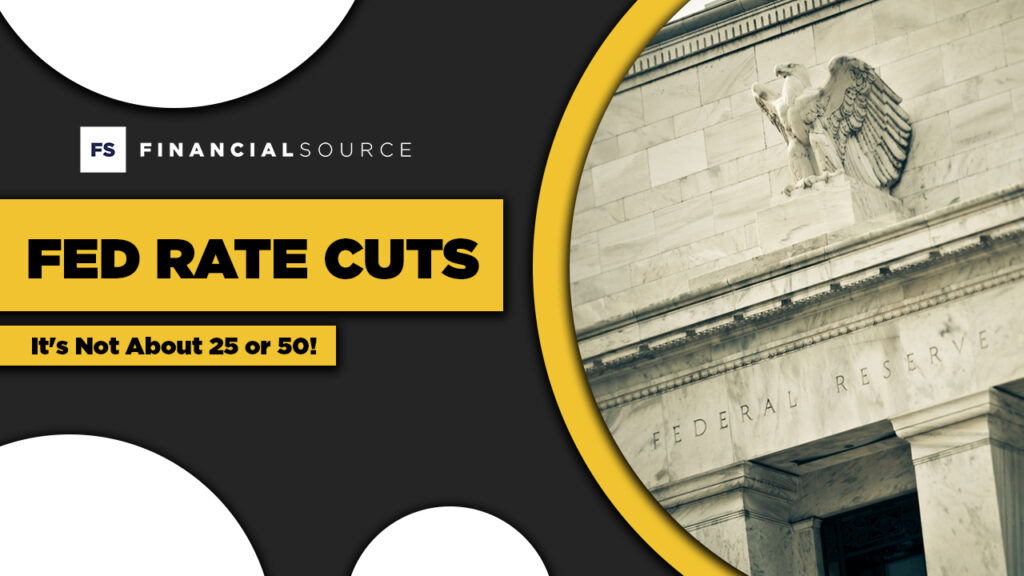FED Rate Cuts: It's not about 25 or 50!

The conversation around the U.S. Federal Reserve’s upcoming decisions isn’t just about whether they’ll cut rates by 25 or 50 basis points; it’s increasingly about how deep the cuts might run across the year. With the latest data reinforcing this, the broader market is shifting its focus to multiple rate cuts over the coming months as the economic landscape softens.
Key labor market metrics underscore this trend. In August 2024, the U.S. economy added 142K jobs, a solid figure but still below the 160K forecast, and significantly down from the 2023 monthly average of 202K. The job openings data also reflects a cooler labor market. In July, job openings fell by 237K, hitting 7.67 million—their lowest level since January 2021. This decline, particularly in sectors like healthcare and manufacturing, suggests companies are pulling back on hiring plans. The unemployment rate, which eased to 4.2% in August, is another sign of a moderating labor market.
Moreover, inflation indicators like the Fed’s preferred gauge, Core PCE Price Index, remained at 2.6% year-over-year in July, reinforcing the notion that inflation is trending downward. This slower inflation trajectory offers the Fed more room to execute deeper rate cuts without fear of overheating the economy.
As the jobs market cools and inflation stabilizes, the focus for traders and investors should be on how many cuts the Fed might implement this year. This shift in expectations is reflected in short-term interest rate markets, which now suggest a 71% probability of a 50bps rate cut at the next meeting. Just a week ago, this figure was far lower, around 19%.
The recent data raises an essential question: Will the Fed adopt a wait-and-see approach with incremental 25bps cuts, or will it front-load the easing process with a bolder 50bps move? The labor market’s cooling off suggests they may lean toward a more aggressive cut to prevent a sharper slowdown in the economy.
Key indicators like the Non-Farm Payrolls and job openings data, combined with a stable inflation trend, provide intraday support for traders looking to sell USD against stronger currencies like the euro and yen, as a deeper rate cut is increasingly priced into the markets.
With inflation steadily declining and the labor market showing signs of strain, keep an eye on USD pairs for more volatility ahead of the Fed’s next meeting. If the Fed opts for deeper cuts, we may see continued weakness in the dollar.
ECB Caution: A Limited Window for Action
The ECB’s hesitance to telegraph an immediate rate cut reflects its limited manoeuvring space. With inflation still elevated and economic growth fragile, the ECB is under pressure to maintain a delicate balance. While the Fed has the flexibility to be aggressive in its cuts, the ECB appears more constrained. This could keep EUR/USD bought on the dips as markets perceive the ECB’s monetary policy stance as more hawkish compared to the anticipated Fed’s dovish pivot.
However, the market’s focus is now shifting towards the Federal Reserve and its decision this week and the narrative has now shifted.
Fed’s Shifting Focus: How Deep Will the Cuts Go?
The narrative around the Fed has evolved significantly. It’s no longer a question of whether the Fed will cut by 25 or 50 basis points, but rather how deep the cuts will go and how long they will last. Markets are increasingly speculating that Powell and the FOMC could initiate a more aggressive easing cycle to counteract slowing economic conditions. This shift in sentiment is creating a clear EUR/USD dip buying bias ahead of Wednesday’s Fed meeting.
Why?
The dollar tends to weaken when the Fed signals deeper and prolonged rate cuts, as lower interest rates reduce the currency’s yield advantage. This provides an opportunity for EUR/USD buyers to step in, particularly when the pair dips near key technical levels.
Key Levels to Watch: 1.103 as a Critical Support Zone
The 1.103 level is one such critical for EUR/USD traders this week. This price zone represents last week’s high and may act as a support level, seeing there is a weekly reversal candle in place. With the Fed meeting looming, dip buyers are likely to step in if the pair pulls back to this level. If 1.103 holds, we could see renewed buying momentum as traders position for potential dollar weakness following the Fed’s decision.
Market Sentiment: Risk and Uncertainty Remain High
Although dip buyers may be favoured into the meeting, it’s important to remember that market sentiment can shift quickly. Any surprises in the Fed’s tone or actions could dramatically alter the landscape. A more cautious or unexpectedly hawkish Powell could strengthen the dollar, putting EUR/USD buyers under pressure once again.
For now, though, the combination of ECB hesitation and Fed dovishness suggests that EUR/USD remains a buying opportunity, particularly on dips into 1.103 or just below, as traders prepare for Wednesday’s critical Fed meeting.